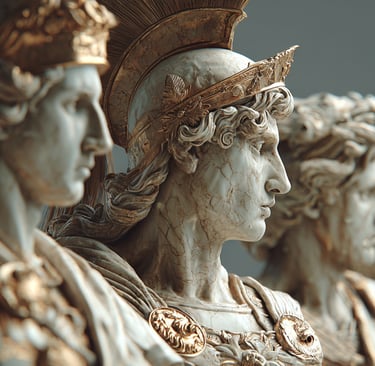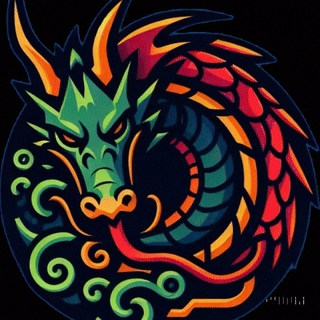Sources and Historical Evidence
Understanding Roman mythology requires examining the diverse array of sources that preserve these ancient beliefs and practices. Unlike modern religious traditions with standardized texts, Roman mythology comes to us through fragments scattered across centuries of literature, inscriptions, artwork, and archaeological remains. Each source type offers unique insights while presenting its own interpretive challenges.
Literary Sources
Epic Poetry
Virgil's Aeneid (29-19 BCE) stands as our most comprehensive source for Roman mythological narrative. Commissioned during Augustus's reign, this epic deliberately shaped Roman mythological tradition to support imperial ideology. Virgil drew from earlier Greek epics while creating distinctly Roman themes of duty, sacrifice, and destiny. However, the Aeneid's political purpose means it presents idealized rather than authentic folk traditions.
Ovid's Metamorphoses (8 CE) provides the most extensive collection of mythological stories from the Roman world. Ovid's narrative encompasses over 250 myths, many of Greek origin but filtered through Roman sensibilities. His focus on transformation stories reveals Roman fascination with change and continuity, though his sophisticated literary treatment sometimes obscures original religious meanings.
Lucan's Pharsalia and other imperial epics continued mythological traditions while adapting them to contemporary political concerns. These works show how Roman mythology evolved to address new historical circumstances while maintaining connection to ancestral traditions.
Historical Writing
Livy's Ab Urbe Condita (27 BCE - 14 CE) treats Roman mythological traditions as authentic history, providing detailed accounts of legendary kings, heroes, and divine interventions. Livy's work is invaluable for understanding how educated Romans viewed their mythological heritage, though his sources often mixed genuine tradition with later invention.
Tacitus's historical works offer glimpses of religious practices and beliefs across the empire. His accounts of Germanic and British religious traditions provide comparative material for understanding Roman religious development, while his descriptions of imperial cult practices reveal how mythology functioned in political contexts.
Plutarch's Parallel Lives preserves numerous mythological traditions, particularly in his biographies of early Roman figures like Romulus and Numa. Writing in Greek during the imperial period, Plutarch offers an outsider's perspective on Roman religious traditions while drawing from sources now lost to us.
Antiquarian Writers
Varro's Antiquitates (now surviving only in fragments) was ancient Rome's most comprehensive study of religious traditions. Varro systematically catalogued Roman religious practices, priestly functions, and festival origins. Later writers like Augustine and Lactantius preserved Varro's insights, making him crucial for understanding authentic Roman religious thinking.
Festus's epitome of Verrius Flaccus preserves valuable information about archaic Roman religious terminology and practices. These grammatical and etymological works often contain our only evidence for early religious concepts that later sources assume rather than explain.
Pliny the Elder's Natural History includes extensive information about religious uses of plants, animals, and minerals. His work reveals the practical, everyday aspects of Roman religious practice that elite literary sources often ignore.
Inscriptional Evidence
Religious Dedications
Votive inscriptions found throughout the Roman world provide direct evidence of actual religious practices rather than literary representations. These dedications reveal which deities people actually worshipped, what they requested from gods, and how they fulfilled religious obligations. The formulaic nature of votive inscriptions allows scholars to trace regional variations and historical changes in religious practice.
Curse tablets (defixiones) offer unique insight into popular religious beliefs and practices. These lead tablets, inscribed with requests for divine punishment of enemies, reveal aspects of Roman religious thinking rarely discussed in elite literary sources. They show how ordinary Romans understood divine justice and the mechanics of divine intervention.
Funerary inscriptions preserve evidence for beliefs about death, afterlife, and divine protection. The evolution of funerary formulae reflects changing religious attitudes, particularly the influence of mystery cults and philosophical schools on popular religious thinking.
Priestly Records
Acta Arvalia preserve the proceedings of the Arval Brethren, one of Rome's oldest priestly colleges. These inscriptions document actual religious rituals, prayers, and sacrificial procedures across several centuries, providing unparalleled evidence for the continuity and change in Roman religious practices.
Fasti (religious calendars) inscribed on stone preserve official festival dates and ritual requirements. These calendars reveal the complex interplay between religious and civic time, showing how mythological narratives were integrated into annual civic cycles.
Sacred law inscriptions document specific ritual requirements, temple regulations, and priestly duties. These legal texts show how Romans codified religious practices and maintained ritual precision across generations.
Archaeological Evidence
Temple Architecture and Decoration
Temple remains throughout the Roman world preserve evidence for religious practices, artistic traditions, and theological concepts. The evolution of temple design from Etruscan-influenced structures to elaborate imperial complexes reveals changing religious attitudes and political purposes.
Sculptural programs decorating temples and public buildings provide visual representations of mythological narratives and religious concepts. These artistic sources often preserve traditions not found in literary works, particularly local and regional mythological variants.
Votive offerings discovered in temple contexts reveal actual religious practices and popular religious concerns. The types of objects dedicated to specific deities illuminate the practical functions that gods served in daily life.
Household Religion
Domestic shrines (lararia) found in houses throughout the empire document household religious practices. These archaeological remains show how mythological traditions were adapted to family contexts and how official religious practices were modified for domestic use.
Household goods decorated with mythological scenes reveal how religious narratives permeated daily life. Pottery, lamps, jewelry, and furniture with mythological decorations show the extent to which these stories influenced Roman material culture.
Burial practices documented through archaeological excavation reveal beliefs about death, afterlife, and divine protection. The evolution of burial customs reflects changing religious influences, particularly the impact of mystery cults and philosophical schools on popular beliefs.
Artistic Sources
Painting and Mosaic
Wall paintings from Pompeii and other sites preserve the largest collection of mythological scenes from the Roman world. These paintings reveal how Romans visualized their gods and heroes, often showing details not preserved in literary sources. The domestic context of many paintings suggests how mythological narratives functioned in private life.
Mosaic pavements throughout the empire depict mythological scenes adapted to local tastes and regional traditions. These artistic sources often preserve local mythological variants and show how Roman mythological traditions adapted to provincial contexts.
Sculpture and Relief
Sarcophagi reliefs provide extensive evidence for beliefs about death and afterlife while preserving mythological narratives adapted to funerary contexts. The popularity of certain mythological themes in funerary art reveals which stories Romans found most meaningful for understanding death and rebirth.
Historical reliefs on monuments like Trajan's Column show how mythological concepts influenced representations of contemporary events. These sources reveal how Romans understood the relationship between mythological precedent and historical experience.
Portrait sculpture often incorporates mythological references and divine attributes, showing how religious concepts influenced Roman self-representation and political ideology.
Coins and Gems
Roman coinage provides chronologically precise evidence for religious developments and official mythological interpretations. Coin designs reveal which deities and mythological themes held political significance at specific historical moments. The wide distribution of coins made them effective vehicles for communicating official religious messages throughout the empire.
Engraved gems preserve miniature mythological scenes and religious symbols that reveal popular religious tastes and personal religious preferences. The intimate nature of gem decoration often preserves religious traditions not found in public monuments or official sources.
Challenges in Interpretation
Source Bias
Most literary sources come from elite Roman males writing for educated audiences. These sources may not accurately represent popular religious beliefs or the religious experiences of women, slaves, and provincial populations. Archaeological evidence helps correct this bias but presents its own interpretive challenges.
Chronological Gaps
Roman religious traditions evolved over more than a millennium, but our sources are unevenly distributed across this time span. Early Roman religious practices must often be reconstructed from later sources that may preserve authentic traditions alongside later inventions.
Regional Variation
The Roman Empire encompassed diverse cultures with distinct religious traditions. Sources from different regions may preserve local variants of mythological traditions that complicate attempts to identify "authentic" Roman religious beliefs.
Cultural Translation
Many Roman sources were influenced by Greek literary models and may present Roman religious traditions in forms adapted to Greek cultural expectations. Distinguishing authentically Roman elements from Greek influences remains a persistent challenge.
Modern Scholarly Approaches
Comparative Method
Scholars use comparative evidence from other Indo-European cultures to reconstruct early Roman religious concepts that may not be explicitly documented in surviving sources. This approach helps identify genuinely ancient elements within later mythological developments.
Archaeological Integration
Modern scholarship increasingly integrates archaeological evidence with literary sources to create more complete pictures of Roman religious life. This interdisciplinary approach reveals aspects of religious practice that neither source type preserves independently.
Social History
Contemporary scholars examine Roman mythology within broader social and economic contexts, using religious evidence to illuminate Roman attitudes toward gender, social class, ethnicity, and political authority.
The Value of Multiple Sources
The diversity of sources for Roman mythology, while creating interpretive challenges, also provides unique opportunities for understanding ancient religious life. By comparing literary representations with archaeological evidence, official inscriptions with popular dedications, and metropolitan sources with provincial materials, scholars can reconstruct Roman mythological traditions in their full complexity.
This source diversity reminds us that Roman mythology was not a fixed system but a living tradition that adapted to changing circumstances while maintaining continuity with ancestral practices. Understanding these sources and their limitations is essential for appreciating both what we can know about Roman mythology and what remains forever lost to historical inquiry.


480-366-3550 (Domain Sales)
© SDBEST LLC, 2025. All rights reserved.
Sponsorship Disclosure
Terms of Service
